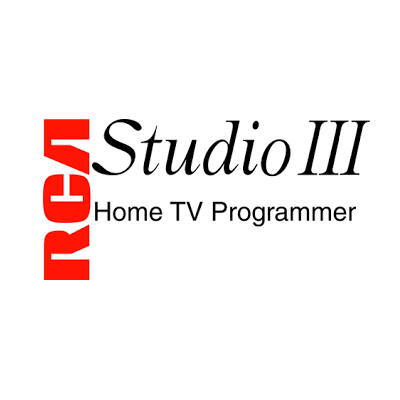|
|
|
History
After the disastrous release of RCA Studio II, RCA immediately started to work on an updated version of the console. The new version was set to have better graphics, color capabilities and a better sound, while remaining backward compatible with the previous version. By September 1977, programming guide for the RCA Studio III was already available. New titles such as Biorhythm and Math fun were actually backward compatible RCA Studio III games released for the RCA Studio II. The work on the Studio III was almost completed with fully functional prototype being showcased by RCA.
But the with the release of the Atari VCS, Bally Astrocade, the APF MP1000 and the upcoming Magnavox Odyssey², it became clear that RCA was about to make the same mistake it made with the RCA Studio II: release an inferior console that the competition. With the sales of the RCA 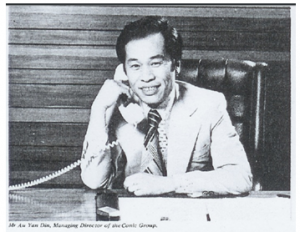 Studio II plummeting, RCA had already lost huge sums of money in the video game adventure. Deciding not to pursue with the RCA Studio III was not an easy choice as the company had already spent a fortune in R&D over this project. RCA was therefore looking for someone interested in taking over the RCA Studio III. RCA who had already licensed the RCA Studio II in Japan to Toshiba (released under the name Visicom C-100), understood that if the RCA Studio III would have any chance of success, it needed to be exported. In the late 70s, the U.S. was crawling with new video game console, but in the rest of the world, the pong-like console were still kings. With little to no competition, the RCA Studio III could take a good share of the market. But RCA had no intention of gambling any more money in this adventure. Instead, they struck a deal with the Conic Group. Under the leadership of its founder Alex Au Yan-din (柯俊文) (see picture), the Conic Group became the largest electronics manufacturer in Hong Kong which at its peak had annual turnover of over HK$1 billion, over 40 subsidiaries, over 12000 employees.
Studio II plummeting, RCA had already lost huge sums of money in the video game adventure. Deciding not to pursue with the RCA Studio III was not an easy choice as the company had already spent a fortune in R&D over this project. RCA was therefore looking for someone interested in taking over the RCA Studio III. RCA who had already licensed the RCA Studio II in Japan to Toshiba (released under the name Visicom C-100), understood that if the RCA Studio III would have any chance of success, it needed to be exported. In the late 70s, the U.S. was crawling with new video game console, but in the rest of the world, the pong-like console were still kings. With little to no competition, the RCA Studio III could take a good share of the market. But RCA had no intention of gambling any more money in this adventure. Instead, they struck a deal with the Conic Group. Under the leadership of its founder Alex Au Yan-din (柯俊文) (see picture), the Conic Group became the largest electronics manufacturer in Hong Kong which at its peak had annual turnover of over HK$1 billion, over 40 subsidiaries, over 12000 employees.
In April 1978, Conic signed a licensing deal that included the right to produce 200,000 units based on the RCA Studio III intellectual properties. The deal included all the games released for the RCA Studio II plus Bingo, Star Wars, Concentration Match and Pinball. It wasn’t long before Conic had a fully working prototype and by June, the system would be presented to the CES 1978 in Chicago. Code-named “Victory-3”, the console was presented by Accurate Electronics Industry Ltd (精密電子工業), a Conic subsidiary with offices in the U.S.
Release
Conic was already a well-established company in the video game industries having released hundreds of video games pong-like consoles under different brands. Conic used their subsidiaries such as Soundic Electronics (聲德電子) and other affiliates to distribute the console in different countries (see the consoles list below). The console was released around the same time as the 1292 Advanced Programmable Video System line of console which rapidly took over the console market segment in Europe and Australia.
Demise
The line of consoles put out by Conic was short-lived and no games outside the launch titled were ever released. It’s unknown if Conic even manage to sell the 200,000 units of the initial agreement, but it appears the agreement was never extended.
1200 Series
Most of the Studio III variation use the same mold:
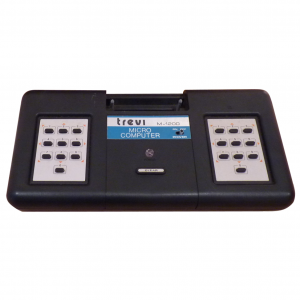 |
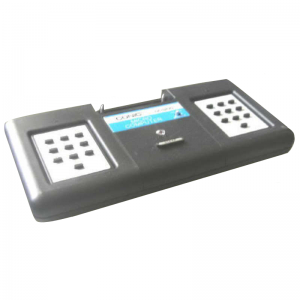 |
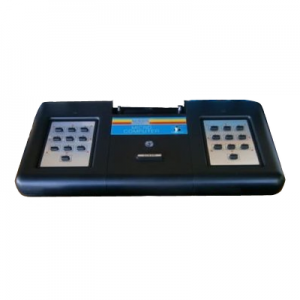 |
|||
| Trevi M-1200 Micro-Computer |
Conic M-1200 | Sheen M-1200 Micro-Computer | |||
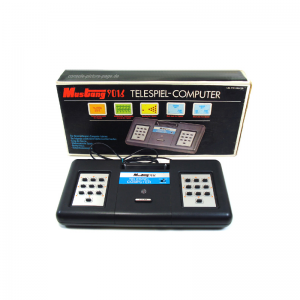 |
|||||
| Mustang 9016 Telespiel Computer |
Apollo 80
The Apollo 80 as it own unique mold which is very similar to the M1200 series but except with square edges instead of round one.
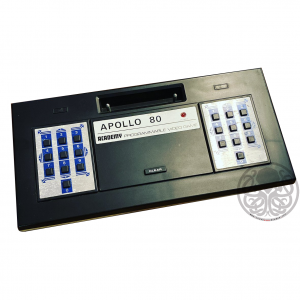 |
|||||
| Apollo 80 Programmable Video Game |
Soundic & Hanimex
Soundic chosoed a more elaborate design for its console, including detachable controller.
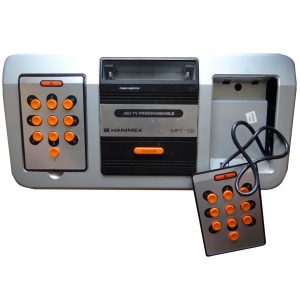 |
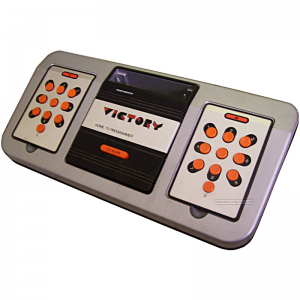 |
||||
| Jeu TV Programmable MPT-02 by Hanimex | Victory Home TV Programmer (MPT-02) by Soundic |
Game List
Here’s a list of all 14 RCA Studio II and III games released for the Conic console line. It’s to be noted that all consoles had their unique numbering schemes.
- Baseball
- Bingo
- Biorhyth
- Concentration
- Computer Quiz
- Fun with Numbers
- Gun Fight/Moon Ship
- Grand Pack (include the 4 built-in games. Sold with the Hanimex version as it didn’t come with the built-in games).
- Math Fun
- Pinball
- Spacewar Intercept
- Speedway Tag
- Star Wars
- Tennis/Squash
Technical Specification
The NTSC based RCA Studio II systems use a CDP1861 (also marked TA10171V1) to generate video and a 555 time to generate the unique ‘squeak’ sound. The graphics were in White in Black which was one of the major reasons behind the demise of the console. The Studio III would instead have the ability to display have 4 background colors and 7 foreground colors. It can generate 256 different tones, but instead uses a CDP1863 chip for sound. In the NTSC version, the system was set to use the CDP1861 to generate the video signal and the CDP1862 to overlay a memory mapped color over it. Color memory was 256 bytes. In the PAL version, the Studio III used the CDP1864 for both video and sound too, but was programmed differently to allow the 4 background colors and 7 foreground colors.

